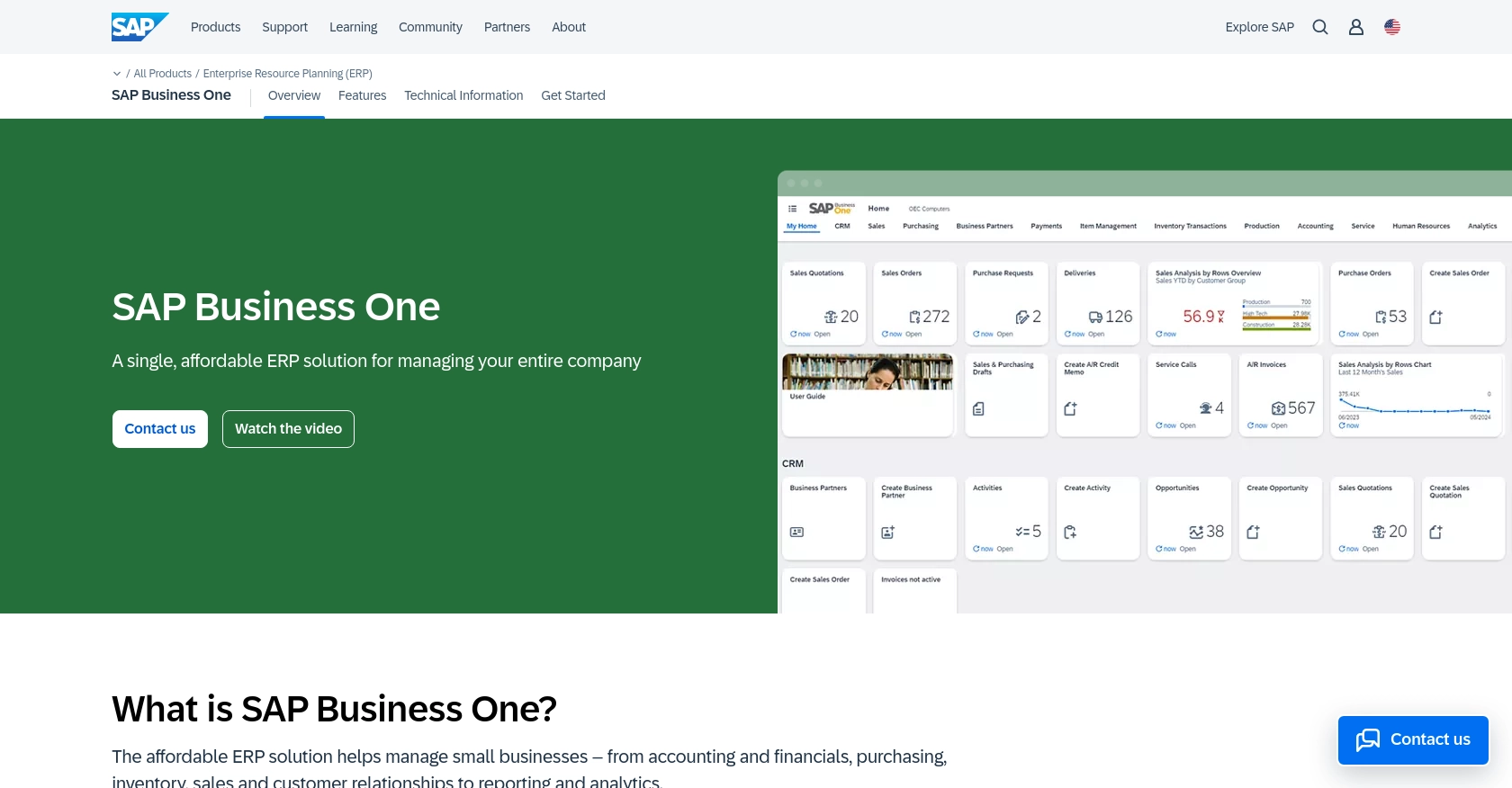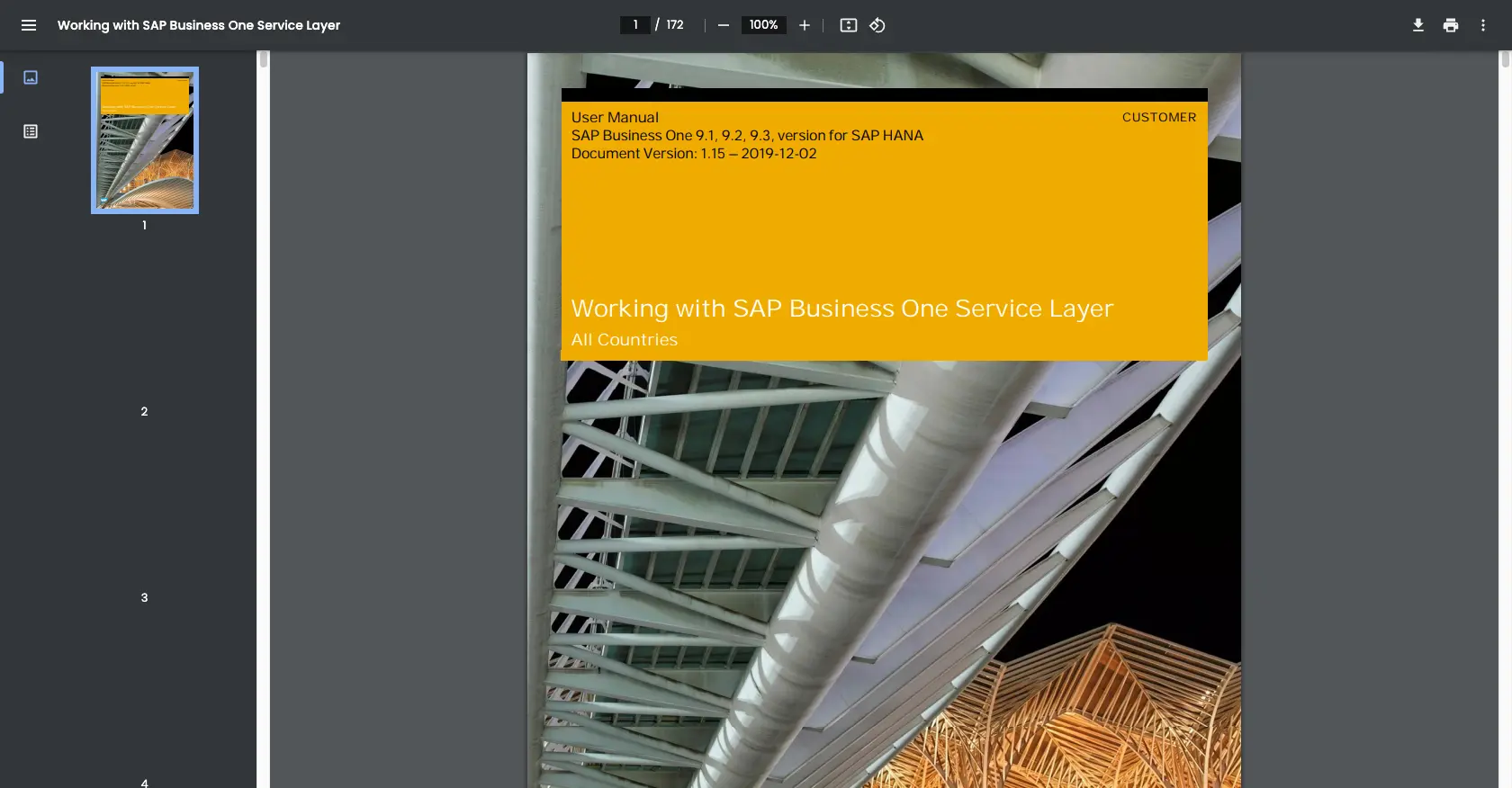Using the Sap Business One API to Create or Update Customers (with PHP examples)

Introduction to SAP Business One API
SAP Business One is a comprehensive enterprise resource planning (ERP) solution designed specifically for small and medium-sized businesses. It offers a wide range of functionalities, including financial management, sales, customer relationship management, and inventory control, all within a single integrated system.
Developers often seek to integrate with the SAP Business One API to enhance business operations by automating processes such as customer management. For example, using the SAP Business One API, a developer can create or update customer records directly from an external application, ensuring that customer data is always up-to-date and synchronized across platforms.
Setting Up Your SAP Business One Test or Sandbox Account
Before you can start integrating with the SAP Business One API, you'll need to set up a test or sandbox account. This environment allows you to safely experiment with API calls without affecting live data. Follow these steps to get started:
Register for a SAP Business One Sandbox Account
If you don't already have access to a SAP Business One sandbox, you'll need to register for one. Visit the SAP Business One website and sign up for a trial or demo account. This will give you access to a sandbox environment where you can test API interactions.
Configure Your SAP Business One Environment
Once you have access to the sandbox, you'll need to configure it to allow API access:
- Log into your SAP Business One sandbox account.
- Navigate to the administration section and locate the API settings.
- Ensure that the API service layer is enabled, as this is necessary for making API calls.
Authentication Setup for SAP Business One API
SAP Business One uses a custom authentication method. Here's how to set it up:
- Create an API user within your SAP Business One sandbox account. This user will be used to authenticate API requests.
- Generate the necessary credentials, such as a client ID and client secret, which will be used in your API calls.
- Ensure that the API user has the appropriate permissions to create or update customer records.
For more detailed information on authentication, refer to the official documentation: SAP Business One Service Layer Guide and Service Layer API Reference.

sbb-itb-96038d7
Making API Calls to SAP Business One for Customer Management Using PHP
To interact with the SAP Business One API for creating or updating customer records, you'll need to use PHP to make HTTP requests. This section will guide you through the process of setting up your PHP environment, writing the necessary code, and handling responses from the API.
Setting Up Your PHP Environment for SAP Business One API Integration
Before you begin coding, ensure that your development environment is properly configured:
- Install PHP version 7.4 or higher on your machine.
- Ensure that the
cURLextension is enabled in your PHP configuration, as it will be used to make HTTP requests. - Optionally, install Composer to manage dependencies, although it's not strictly necessary for this example.
Creating or Updating Customers with SAP Business One API
Below is a sample PHP script to create or update a customer record using the SAP Business One API:
<?php
// Set the API endpoint
$endpoint = "https://your-sap-business-one-instance.com/b1s/v1/BusinessPartners";
// Set the authentication credentials
$username = "your_api_username";
$password = "your_api_password";
// Initialize cURL session
$ch = curl_init($endpoint);
// Set cURL options
curl_setopt($ch, CURLOPT_RETURNTRANSFER, true);
curl_setopt($ch, CURLOPT_HTTPAUTH, CURLAUTH_BASIC);
curl_setopt($ch, CURLOPT_USERPWD, "$username:$password");
curl_setopt($ch, CURLOPT_HTTPHEADER, array('Content-Type: application/json'));
// Define the customer data
$customerData = array(
"CardCode" => "C12345",
"CardName" => "John Doe",
"CardType" => "C",
"EmailAddress" => "john.doe@example.com"
);
// Convert the customer data to JSON
$jsonData = json_encode($customerData);
// Set the request method and payload
curl_setopt($ch, CURLOPT_CUSTOMREQUEST, "POST");
curl_setopt($ch, CURLOPT_POSTFIELDS, $jsonData);
// Execute the request
$response = curl_exec($ch);
// Check for errors
if (curl_errno($ch)) {
echo 'Error:' . curl_error($ch);
} else {
// Parse and display the response
$responseData = json_decode($response, true);
echo "Customer Created/Updated Successfully: " . $responseData['CardCode'];
}
// Close the cURL session
curl_close($ch);
?>Replace your_api_username and your_api_password with your actual SAP Business One API credentials. The CardCode and other fields should be adjusted according to your specific customer data.
Verifying API Call Success in SAP Business One Sandbox
After executing the script, you can verify the success of the API call by checking the SAP Business One sandbox environment:
- Log into your SAP Business One sandbox account.
- Navigate to the customer management section to see if the new or updated customer record appears.
Handling Errors and Error Codes from SAP Business One API
Proper error handling is crucial for robust API integration. If the API call fails, the response will contain error details:
- Check the HTTP status code returned by the API. A status code of 200 indicates success, while other codes may indicate errors.
- Parse the error message from the response to understand the issue and take corrective action.
For more detailed error code information, refer to the official SAP Business One documentation.
Conclusion and Best Practices for SAP Business One API Integration
Integrating with the SAP Business One API can significantly enhance your business operations by automating customer management processes. By following the steps outlined in this guide, you can efficiently create or update customer records using PHP, ensuring data consistency across your platforms.
Best Practices for Secure and Efficient SAP Business One API Usage
- Securely Store Credentials: Always store your API credentials securely, using environment variables or secure vaults, to prevent unauthorized access.
- Handle Rate Limiting: Be aware of any rate limits imposed by SAP Business One and implement retry logic to handle potential throttling.
- Standardize Data Fields: Ensure that customer data fields are standardized to maintain consistency and avoid errors during API calls.
- Implement Error Handling: Use robust error handling to capture and log API errors, allowing for quick troubleshooting and resolution.
Streamlining Integrations with Endgrate
While integrating with SAP Business One can be highly beneficial, managing multiple integrations can be complex and time-consuming. Endgrate simplifies this process by providing a unified API endpoint that connects to various platforms, including SAP Business One.
By leveraging Endgrate, you can save time and resources, allowing your team to focus on core product development. With Endgrate, you build once for each use case and enjoy an intuitive integration experience for your customers.
Explore how Endgrate can streamline your integration processes by visiting Endgrate today.
Read More
Ready to get started?
